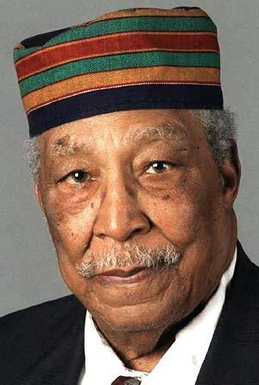Ernest Withers facts for kids
Quick facts for kids
Ernest Columbus Withers, Sr.
|
|
|---|---|
 |
|
| Born | August 7, 1922 Memphis, Tennessee, U.S.
|
| Died | October 15, 2007 (aged 85) Memphis, Tennessee, U.S.
|
| Occupation |
|
|
Notable work
|
Photographs of the segregated South in the 1940s–2000s, Negro league baseball, and the Memphis blues scene. |
Ernest C. Withers (August 7, 1922 – October 15, 2007) was an African-American photojournalist. He documented over 60 years of African-American history in the segregated Southern United States, with iconic images of the Montgomery bus boycott, Emmett Till, Memphis sanitation strike, Negro league baseball, and musicians including those related to Memphis blues and Memphis soul. In 2010, it was revealed that Withers was recruited and paid by the FBI's COINTELPRO program to inform on the US Civil rights movement for nearly two decades, beginning shortly after his first photograph of Martin Luther King Jr.
Withers's work has been archived by the Library of Congress and has been slated for the permanent collection of the Smithsonian Institution's National Museum of African American History and Culture, in Washington, D.C.
Contents
Biography
Early life
Ernest C. Withers was born in Memphis, Tennessee, to Arthur Withers and Pearl Withers of Marshall County, Mississippi; he had a step-mother known as Mrs. Minnie Withers. Withers exhibited interest in photography from a young age. He took his first photograph in high school after his sister gave him a camera she received from a classmate. He met his wife Dorothy Curry of Brownsville, Tennessee (they remained married for 66 years), at Manassas High School in Memphis, Tennessee.
During World War II, he received training at the Army School of Photography. After the war, Withers served as one of Memphis' first African-American police officers.
Personal life
Withers and his wife Dorothy had eight children together (seven boys and one girl, Rosalind Withers). He also had a second daughter from Memphis, Tennessee, named Frances Williams. All of his sons accompanied him as apprentice photographers at different points in his career, including Ernest, Jr., Perry O., Clarence (Joshua), E., Wendell J., Dedrick (Teddy) J., Dyral L., and Andrew (Rome). His business was called Withers Photography Studio.
Withers enjoyed traveling, visiting family members and entertaining guests at his home, including Brock Peters, Jim Kelly, Eartha Kitt, Alex Haley, Ivan van Sertima, Stokley Carmichael (Kwame Ture), and many others from the entertainment world and black consciousness movement. He attended Gospel Temple Baptist Church in Memphis, Tennessee. He was also an all-round (high-school to professional) sports enthusiast.
Career
Withers was active for approximately 60 years, with his most noted work being the images captured of the Civil Rights Movement.
He traveled with Martin Luther King Jr. during his public life. Withers's coverage of the Emmett Till murder trial brought national attention to the racial violence taking place during the 1950s in Mississippi, among other places. Withers appeared in a TV documentary about the murdered 14-year-old entitled The American Experience: The Murder of Emmett Till.
Withers served as official photographer for Stax Records for 20 years.
Between 1 million and 5 million images are estimated to have been taken during Withers's career, with current efforts in progress for preservation and digitization.
Death
In 2007, Withers died from the complications of a stroke in his hometown of Memphis.
FBI Document Release
In 2013, the FBI released documents relating to Withers in response to a Freedom of Information Act (FOIA) request by a Memphis newspaper, The Commercial Appeal. The documents begin in 1946 with the FBI investigating Withers as a possible communist, as he was a member of the United Negro Allied Veterans of America (UNAVA) after serving in World War II, and the group was thought to have communist ties.
A 1968 document contains the first reference to an informant, ME 338-R (Ghetto), widely believed to be a reference to Withers and inferred by the FBI's responses to FOIA court actions. ME 338-R(Ghetto) provided a variety of general information, including pictures and brief descriptions of meetings and events. There is limited specific information, commonly relating to a militant group named the Invaders. .....
ME 338-R(Ghetto) was an informant for two years, 1968 through the final report in 1970, with 19 reports that include some reference to the informant. A total of 10 pictures were provided by the informant in the released documents.
Withers died years before the FOIA request was made, thus no direct response was possible. However, at the 2000 Withers exhibition at the Chrysler Museum of Art in Norfolk, Virginia, Withers said he had FBI agents regularly looking over his shoulder and questioning him. "I never tried to learn any high powered secrets," Withers said. "It would have just been trouble.…[The FBI] was pampering me to catch whatever leaks I dropped, so I stayed out of meetings where decisions were being made."
Civil rights leader Andrew Young commented after the release of the FBI file: "The movement was transparent and didn't have anything to hide anyway."
Ernest Withers Museum and Collection
The Ernest Withers Museum and Collection opened in Memphis, Tennessee, on Beale Street in May 2011. The Museum features images of Ernest Withers spanning the eras of his work, while the complete archive is held in an offsite location. The Withers Museum and Collection is approximately 7,000 square feet.
See also

